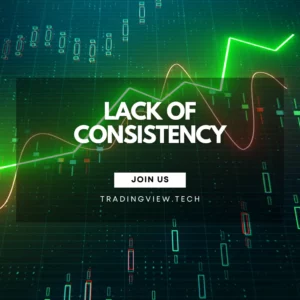In the dynamic and often unpredictable world of trading, risk is a constant companion. Whether you’re trading stocks, forex, commodities, or cryptocurrencies, the potential for financial loss is always present. Unfortunately, many traders—especially those who are just starting—tend to underestimate or completely overlook the critical role that risk management plays in achieving long-term profitability. They focus solely on profit potential, driven by emotion, adrenaline, or a streak of overconfidence, while ignoring the downside risk that lurks behind every decision.
This lack of discipline is one of the primary reasons why a large percentage of retail traders fail to sustain success. It’s not the market that ultimately defeats them, but their inability to protect their capital through sound risk management principles. Successful trading isn’t about avoiding risk entirely—that’s impossible—but about understanding it, measuring it, and managing it effectively. This foundational concept is what separates professional traders from amateurs.
Understanding Risk in Trading
Risk, in the context of trading, refers to the possibility of losing money on an investment. It is the uncertainty that surrounds every decision to buy or sell a financial instrument. Every time a trader enters a position, they are making a calculated bet based on their analysis of price action, news, technical indicators, or economic data. However, no matter how well-informed or logical the decision may be, there is never a guarantee that the trade will go in the anticipated direction. This uncertainty is the essence of risk.
What makes risk particularly dangerous in trading is that it can often be deceptive. A string of profitable trades can create a false sense of security, leading traders to become overly confident and careless with their capital. Conversely, a sudden market shock or an emotional decision can lead to disproportionately large losses. The market doesn’t reward risk-takers; it rewards those who take calculated risks.
Recognizing that risk is inherent in every trade is the first step toward managing it. No trading strategy, no matter how sophisticated, can eliminate risk. However, risk is not something to be feared—it is something to be controlled. When approached with a clear plan, rational thinking, and defined parameters, risk transforms from a threat into a manageable component of a trader’s strategy.
Controlling risk means setting clear rules about how much of your trading capital you are willing to put on the line for any single trade. It means knowing where your exit points are before you enter a position. It means not allowing losses to spiral out of control because of hesitation or emotional decision-making. In short, it means treating trading as a business, where every decision is made with discipline and foresight.
Understanding risk also involves accepting losses as part of the process. Losses are inevitable in trading—they are the cost of doing business. The key is ensuring that no single loss is large enough to severely damage your account or your confidence. Traders who master risk management develop a long-term mindset. They understand that it’s not about winning every trade, but about making more on your winners than you lose on your losers—while ensuring they stay in the game long enough to let their edge work.
Consequences of Poor Risk Management
The consequences of neglecting risk management in trading can be both swift and severe. While the lure of quick profits might entice traders to bypass risk controls, history is full of cautionary tales that reveal just how costly this approach can be.
One common scenario involves risking too much capital on a single trade. A trader might feel highly confident about a market move—perhaps due to a strong technical setup or breaking news—and decide to go “all in” or commit a large percentage of their account. If the market moves against them, even slightly, they can suffer a loss so significant that it becomes nearly impossible to recover. Just one such event can eliminate weeks, months, or even years of trading gains.
A notable real-world example is the case of Nick Leeson, the rogue trader at Barings Bank. Driven by overconfidence and a lack of oversight, Leeson took massive speculative positions on the derivatives market without appropriate risk controls. When the market turned against him, the losses spiraled out of control—ultimately leading to the collapse of the 233-year-old bank. Though this is an extreme case, it clearly illustrates how ignoring risk management, even at institutional levels, can lead to catastrophic results.
At the retail level, the consequences are more personal but equally destructive. Traders who don’t set stop-loss orders often fall into the trap of hoping the market will turn around instead of planning for a potential exit. They hold onto losing trades for too long, watching losses mount and becoming emotionally paralyzed. This leads to revenge trading, doubling down on bad positions, or abandoning strategies altogether—each a step further down the path of account depletion.
Psychologically, poor risk management leads to stress, anxiety, and a lack of confidence in one’s own system. The trader becomes reactive rather than proactive, and trading decisions become driven by fear or desperation instead of logic. In the end, the inability to manage risk doesn’t just drain a trading account—it erodes the trader’s mindset, which is just as important as any strategy or indicator.
The 1-2% Rule Explained
One of the most fundamental principles in trading risk management is the 1-2% rule. This guideline suggests that a trader should never risk more than 1% to 2% of their total trading capital on a single trade. It’s simple, powerful, and remarkably effective in preserving capital and reducing the emotional burden of trading.
Let’s say a trader has an account balance of $10,000. According to the 1% rule, they should not risk more than $100 on any individual trade. This doesn’t mean the position size must be $100—it means the potential loss if the trade goes wrong should be capped at $100. This is typically done by calculating the stop-loss level based on the asset’s price movement and adjusting the position size accordingly.
This rule works because it introduces consistency and discipline. It helps traders avoid catastrophic losses by keeping each trade’s risk proportionate to the size of their account. Even if the trader experiences a losing streak, their capital will still be largely intact, giving them the opportunity to recover and continue trading with a clear head.
For example, if a trader following the 2% rule experiences five consecutive losses, they will have only lost about 10% of their account—a setback, but far from account-ending. On the other hand, if a trader risks 10% or more per trade, five losses in a row could wipe out half of their account or more, making recovery exponentially more difficult.
The 1-2% rule also helps to maintain emotional control. When the amount of money at risk is reasonable and pre-defined, it becomes easier to stick to the plan without panicking during a drawdown or getting overly excited during a winning streak.
In short, the 1-2% rule is not just about limiting losses—it’s about ensuring survivability in the market. Trading is a long game, and this rule is a cornerstone for anyone aiming to be in the market long enough to see consistent success.
The Role of Stop-Loss Orders
A stop-loss order is one of the most essential tools in a trader’s risk management arsenal. It is a predefined exit point set below (or above, for short positions) the entry price of a trade, instructing the trading platform to automatically close the position when the market reaches that level. While it may seem like a simple feature, the impact it has on a trader’s discipline, emotional stability, and account protection is profound.
Stop-loss orders serve one primary purpose: to limit potential losses. Without them, traders are left at the mercy of their own emotions—fear, hope, and denial—which often lead to irrational decisions. A common mistake is to hold onto a losing trade in the hope that the market will reverse, only to watch losses snowball out of control. A stop-loss eliminates this dangerous impulse by enforcing an exit point regardless of how a trader feels in the moment.
In fast-moving or volatile markets, where prices can shift drastically in seconds, stop-loss orders offer a vital layer of protection. They provide structure to trades and allow traders to calculate their risk-to-reward ratio in advance, making their strategies more objective and measurable.
There are also different types of stop-loss orders—standard stop-loss, trailing stop, guaranteed stop—which can be tailored to the trader’s style and market conditions. For example, a trailing stop moves with the price as it becomes more favorable, locking in profits while still protecting against sudden reversals.
Ultimately, using stop-loss orders is about respecting risk. No trader has a 100% win rate, and accepting that losses are part of the game is essential. By defining your worst-case scenario ahead of time and committing to it, you preserve your capital and your mental clarity, giving yourself the staying power needed for long-term success.
Diversification and Position Sizing
Diversification and position sizing go hand-in-hand as powerful methods for spreading and managing risk.
Diversification involves distributing your capital across different assets or markets to reduce the impact of any single losing trade. Instead of placing all your funds into one trade or asset class, you spread your exposure across various trades that may not be correlated. This way, if one trade performs poorly, the others may help offset the losses. For example, a trader might hold positions in currencies, commodities, and stocks simultaneously, so a downturn in one market doesn’t necessarily sink the entire portfolio.
However, diversification alone isn’t enough—position sizing is the other half of the equation. Position sizing is the process of determining how large each trade should be based on your account balance and risk tolerance. Even a well-diversified portfolio can suffer significant losses if the position sizes are too large.
Let’s say a trader has a $20,000 account and decides to trade five different currency pairs. If they place $4,000 on each trade without considering volatility or risk per trade, they could be overexposed. Instead, they should calculate position sizes that align with their risk management rules—perhaps limiting each position to a 1-2% risk of the account, taking into account the stop-loss level for each trade.
Proper position sizing ensures that no single trade has the power to significantly damage the account. It helps maintain a balanced risk profile and prevents overconfidence from creeping in after a few successful trades. Combined with diversification, it forms a stable foundation for consistent, risk-conscious trading.
Creating a Risk Management Plan
Developing a personal risk management plan is not optional—it is a non-negotiable part of becoming a consistently successful trader. A well-structured plan acts as a trading safety net, keeping you grounded in logic, strategy, and discipline even when the markets become unpredictable.
Here’s what a solid risk management plan should include:
- Risk per Trade Parameters
Clearly define how much of your capital you are willing to risk on each trade—commonly 1-2%. This should be a hard rule, not a suggestion. - Use of Stop-Loss and Take-Profit Levels
Commit to using stop-loss and take-profit orders to automate exits and reduce emotional interference. Set them based on technical analysis or predefined strategies, and never move them impulsively. - Maximum Daily/Weekly Loss Limits
Set a maximum drawdown limit per day or week. For example, if you lose 4% of your account in a single day, you stop trading for that day. This prevents emotional decision-making and “revenge trading.” - Diversification and Position Sizing Guidelines
Define how many open positions you’re comfortable holding at once and the size of each position. Use volatility and market conditions as additional inputs for sizing. - Routine Risk Reviews and Journaling
Regularly review your trades and journal the outcomes, including the reasoning behind your entries and exits. This allows you to identify patterns, both good and bad, and adjust your plan accordingly. - Contingency Plans
Prepare for unexpected market events like slippage, platform outages, or major news releases. Know what actions you’ll take in these scenarios. - Mindset and Emotional Check-ins
Incorporate regular assessments of your mental state. Trading while tired, stressed, or emotional can lead to poor decisions—even with a plan in place.
Once created, stick to the plan. Consistency in execution is what transforms a good plan into great results. Remember, trading isn’t about perfection—it’s about survival and steady growth. A risk management plan ensures you stay in the game long enough to let your skills and strategy compound over time.



